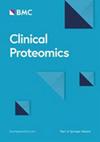Research biopsies in kidney transplantation: an evaluation of surgical techniques and optimal tissue mass allowing molecular and histological analyses
IF 3.3
3区 医学
Q2 BIOCHEMICAL RESEARCH METHODS
引用次数: 0
Abstract
Research biopsies have great potential to advance scientific knowledge by helping to establish predictors of favourable or unfavourable outcomes in kidney transplantation. We evaluated punch and core biopsies of different sizes to determine the optimal size for clinical use. A total of 54 punch biopsies and 18 core needle biopsies were retrieved by three transplant surgeons. Each surgeon obtained three separate 2 mm, 3 mm and 4 mm punch biopsy samples and three 23 mm (length) core needle biopsies from two pig kidneys. 4 mm punch biopsies yielded the greatest amount of protein (2.11 ± 0.41 mg) with good reproducibility between surgeons and biopsy types (Coefficient of Variation ∼ 22.13%). All surgeons found 2 mm biopsies technically challenging to obtain and sample processing was difficult due to the sample size. Shotgun proteomics identified 3853 gene products with no significant difference in the quantitative proteome of 2 mm and 3 mm punch biopsies. However, the expression of 158 Kidney enriched genes, was higher in bigger and deeper 4 mm punch and core needle biopsies compared to 2 mm biopsy. Only 80% of 2 mm biopsies demonstrated the presence of glomeruli, whereas glomeruli were present in 100% of all other biopsy sizes. The 2 mm punch biopsy has been shown to be challenging to use and frequently provides inadequate tissue for histology and proteomics while 3 mm research biopsies were the smallest size that were technically obtainable with adequate tissue for molecular studies.肾移植中的研究活检:评估手术技术和最佳组织质量,以便进行分子和组织学分析
研究性活检有助于确定肾移植手术中有利或不利结果的预测因素,在促进科学知识发展方面具有巨大潜力。我们评估了不同大小的打孔活检和穿刺活检,以确定临床使用的最佳大小。三名移植外科医生共采集了 54 例冲孔活检和 18 例芯针活检。每名外科医生分别从两只猪肾中获取了三份 2 毫米、3 毫米和 4 毫米的打孔活检样本和三份 23 毫米(长度)的核心针活检样本。4 毫米冲孔活检样本的蛋白质含量最高(2.11 ± 0.41 毫克),不同外科医生和活检样本之间的重现性良好(变异系数 ∼ 22.13%)。所有外科医生都认为获取 2 毫米活检样本在技术上具有挑战性,而且由于样本量大,样本处理也很困难。射枪蛋白质组学确定了 3853 个基因产物,2 毫米和 3 毫米冲孔活检样本的定量蛋白质组没有显著差异。然而,与 2 毫米活检组织相比,在更大更深的 4 毫米冲孔活检组织和核心针活检组织中,158 个肾脏富集基因的表达量更高。只有 80% 的 2 毫米活检样本显示存在肾小球,而在所有其他尺寸的活检样本中,100% 都存在肾小球。2 毫米打孔活检已被证明具有挑战性,经常无法为组织学和蛋白质组学研究提供足够的组织,而 3 毫米研究活检是技术上可获得足够组织用于分子研究的最小尺寸活检。
本文章由计算机程序翻译,如有差异,请以英文原文为准。
求助全文
约1分钟内获得全文
求助全文
来源期刊

Clinical proteomics
BIOCHEMICAL RESEARCH METHODS-
CiteScore
5.80
自引率
2.60%
发文量
37
审稿时长
17 weeks
期刊介绍:
Clinical Proteomics encompasses all aspects of translational proteomics. Special emphasis will be placed on the application of proteomic technology to all aspects of clinical research and molecular medicine. The journal is committed to rapid scientific review and timely publication of submitted manuscripts.
 求助内容:
求助内容: 应助结果提醒方式:
应助结果提醒方式:


